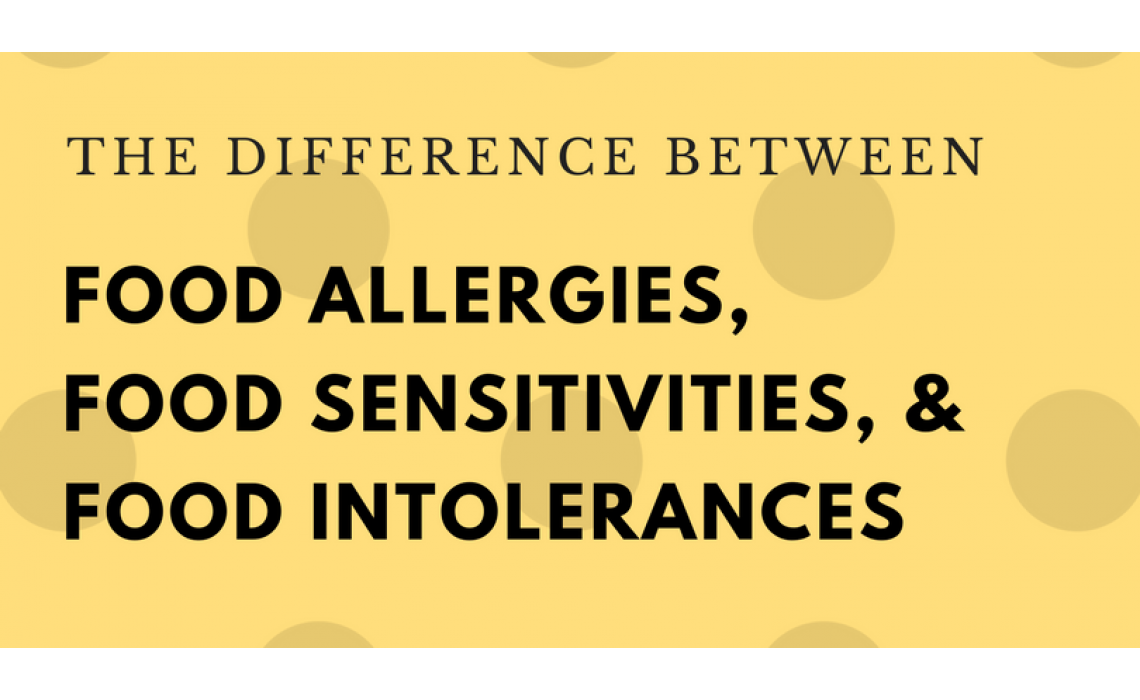Food Allergies vs Food Sensitivities - What's the Difference?
Food allergies, sensitivities, intolerances… aren’t they all the same?! My answer is a hard NO. While these terms may get mixed up in basic conversation, they all have varying meanings and can indicate very different reactions.
Immune Vs Non-Immune Mediated
We’ll start by breaking up food reactions into two different types: Immune Mediated and Non-Immune Mediated. When a reaction is immune mediated, it means that our immune system reacts to that foreign invader (i.e. food, allergen, virus, etc.). When it is non-immune mediated, it means that our bodies are lacking something (like a digestive enzyme, for example) to digest a certain food, but our immune system isn’t stimulated.
Common immune mediated food reactions include:
Food allergy
Food sensitivity
Auto-immune disease
A non-immune mediated food reaction may include:
Lactose intolerance
Bile salt deficiency
What’s The Difference Between Antibodies And Antigens?
Antibodies are blood proteins that respond and bind to an antigen. Antibodies are Y-shaped proteins that are called immunoglobulins, or abbreviated “Ig”, while antigens are the “foreign invaders” like toxins, viruses, bacteria, etc. Sometimes, the body incorrectly responds to foods or other harmless substances like pollen and has a reaction.
There are many different types of antibodies/immunoglobulins, that are named by using the abbreviation “Ig” + a letter (i.e. IgE, IgG, IgA, IgM, etc). Different antibodies will create different types of reactions. Read below for each kind of food reaction and its respective antibody reaction.
Different Types Of Food Reactions
This is where it gets tricky! Each food reaction has different antibodies, mechanisms, and cells involved, different reaction times, and varying levels of symptom severity.
FOOD ALLERGY
Antibody + Mechanism Involved: IgE
Typical Cells Involved: Mast Cells, Basophils, and Eosinophils respond and create inflammation
Common Symptoms: Anaphylaxis, hives, swelling, wheezing or trouble breathing, tingling in mouth, etc.
Typical Reaction Timeline: Typically instantaneous or within 30 minutes
FOOD SENSITIVITY
Antibody + Mechanism Involved: IgG, IgM, IgA, T-Cells
Typical Cells Involved: Neutrophils, Basophils, Macrophages, NK Cells, Eosinophils, Monocytes, T-Cells respond & create inflammation
Common Symptoms: Headache, brain fog, eczema, heartburn, bloating, irritability, gas or cramps, runny nose, etc.
Typical Reaction Timeline: 30 minutes – 72 hours
FOOD INTOLERANCE
Antibody + Mechanism Involved: None. Involves the lack of an enzyme (i.e. lactase, sucrase, etc)
Typical Cells Involved: Gut bacteria digests the indigestible product (i.e. lactose, sucrose, etc) and produces hydrogen and methane gas, and sometimes lactic acid, causing loose stools
Common Symptoms: Diarrhea, stomach cramping, nausea, sometimes vomiting
Typical Reaction Timeline: 30 minutes – 2 hours
CELIAC DISEASE
Celiac disease is a serious auto-immune condition in which the ingestion of gluten causes damage in the small intestine. Celiac Disease may cause malnutrition and/or malabsorption in children and can “pop up” at any time. Symptoms may begin within 30 minutes or up to 2 hours later and include symptoms such as diarrhea, stomach cramping, nausea, and even vomiting.
Which Food Reaction Is The Most Common In Autism?
While we still need more research, there are interesting research studies that show us food reactions in autism are increased, with the most evidence supporting food sensitivities.
FOOD SENSITIVITIES AND AUTISM
In one study by Jyonouchi in a Pediatric Allergy/Immunology Clinic, they suggest that practicing physicians should be aware of the potential impact of allergic diseases on behavioral symptoms and cognitive ability in children with ASD and that certain “IgE allergies” may not be allergies at all, they may be non-IgE mediated causes (suggesting food sensitivity).
Another study looks at the overlap of gastrointestinal symptoms with ASD core symptoms that include pathways in the gut-brain access, which contribute to alterations in behavior and cognition, including IgE mediated and/or cell-mediated GI food reactions and gluten-related disorders (celiac disease, wheat allergy, non-celiac gluten sensitivity) .
FOOD ALLERGIES AND AUTISM
Food allergies are prevalent in up to 30% of the general population and seem to be increasing in developed countries [1]. In a 2018 national study, a “significant and positive association of common allergic reactions, in particular food allergy, was found”.
FOOD INTOLERANCES AND AUTISM
As food intolerances often are caused by the absence of a digestive enzyme, it’s important for us to look at many digestive enzymes, not just the most common lactase. One study reported that decreased disaccharidase activity (including lactase, maltase, sucrose glucoamylase, and palatinase) associated with functional GI abnormalities was reported in children with autism. Other studies suggest that Elastase-1 is an important pancreatic enzyme that is important to take into consideration for autism.
CELIAC DISEASE AND AUTISM
There is no known association between a child with ASD having Celiac Disease, however we do see that maternal autoimmune disease is significantly associated with modest increase in odds of developmental disorders overall.
How Can I Test For Food Reactions?
Food Sensitivities: Since many antibodies can be involved with food sensitivity reactions (IgG, IgM, IgA, etc), it’s best to use an end-point test rather than just an isolated antibody test (like an IgG Food Sensitivity Test). In my practice, I use the Mediator Release Test (MRT). If you are wanting to use the MRT, be sure you are in the care of a Registered Dietitian who is also a CLT. Food Allergies: RAST or Skin Prick Test (SPT) by an allergist
Food Intolerances: Breath testing can be helpful depending on what you’re testing for
Celiac Disease: There are many ways to test for risk or active celiac disease. Learn more about this process from the Celiac Disease Foundation.
The Bottom Line
It’s important to remember that everybody is different, and food reactions may produce different symptoms in different people. In fact, different foods can produce different symptoms in the same person. It is also possible to have more than one type of food reaction (i.e. dairy allergy and lactose intolerance).
If you suspect an IgE food allergy, it is always best to get tested by your pediatrician or an allergist to rule it out, as these can be life-threatening. For food sensitivities, find a RD who is also a CLT in your area to assist you in ordering the Mediator Release Test.



